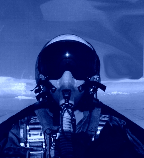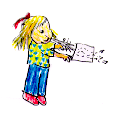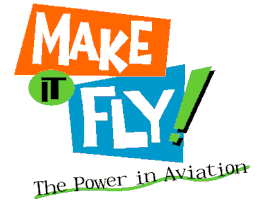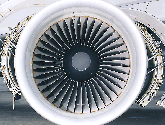| |
|
|
|
|
 |
|
||||||||||
|
|
An airplane's wings have a special shape to them - with a curved top surface and a fairly flat bottom surface. When a plane moves faster and faster down the runway the air rushes over and under the airplane's wings. Because of the wing's shape, the air moving over the curved top of the wing has further to go (than the air under the wing) so it has to move faster and gets spread out more thinly.
Thin air means low pressure. When you have lower pressure
pushing down on the top of the wing than the pressure underneath pushing
up, you have LIFT. The faster the plane moves forward the greater the
lift. Up you go!
Mr. Bernoulli and airplane wings & things Ever here of Bernoulli's Principle? Daniel Bernoulli back in the 1700's made many experiments with fluids. Air is a fluid. In his experiments he proved that the pressure in a fluid (in our example - air) decreases as the speed of the fluid (air) increases! This fact became the basic principle that explains the lift created from an airplane's wings - air moves faster on the top of the wing compared to the air moving under the wing. LIFT. Paint sprayers and lawn mower engine carburetors work
because of the Bernoulli's principle, also. Fast moving air speeds up
across the spray nozzle or the fuel nozzle of a gasoline engine carburetor,
(called the "venturi") because of the nozzle's shape. The
fast moving air has a slightly lower air pressure than the air around
the paint or gasoline, thus drawing up either the paint or gasoline
and spraying it out with the fast moving air. Easy! [
>> ?'s ]
|
||||||||||








